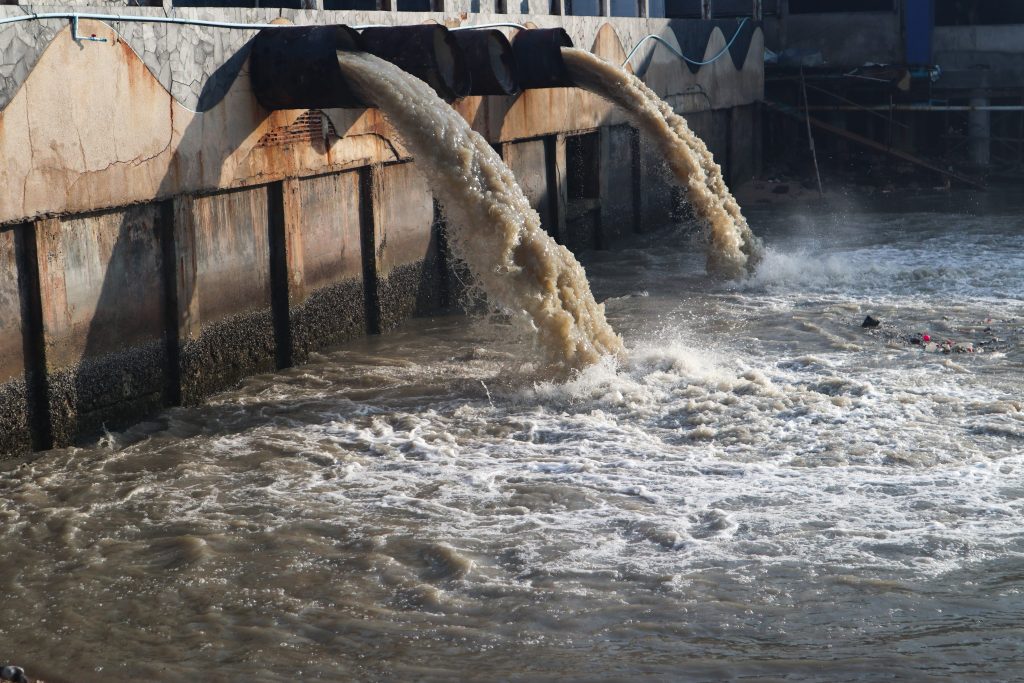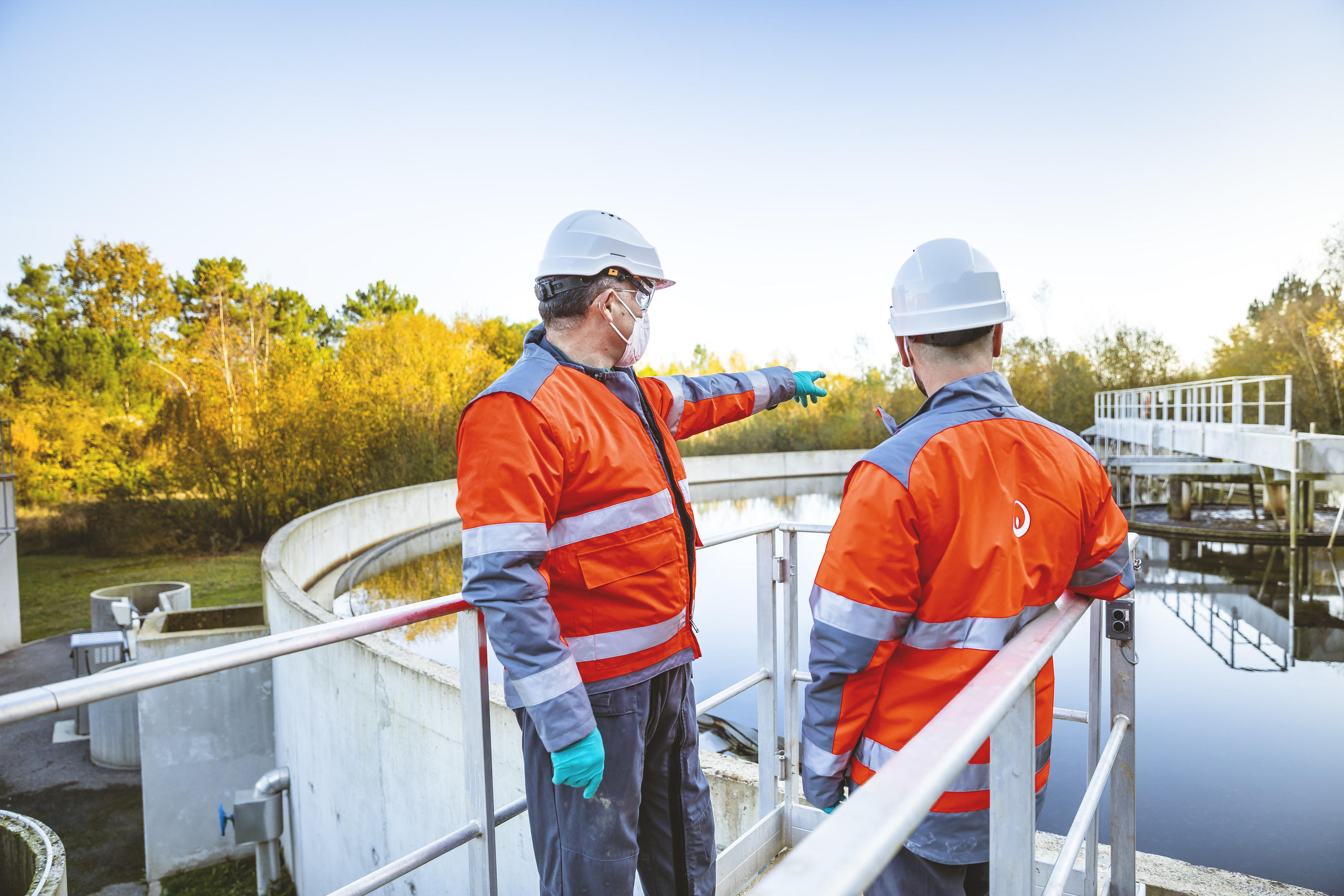Industrial Waste Water Treatment-- Comprehensive Solutions for Wastewater Disposal
Technologies and Advances in Hazardous Waste Water Therapy Technologies
The landscape of commercial wastewater treatment is going through a transformative shift, driven by developments that improve both performance and sustainability. Emerging modern technologies, such as membrane bioreactors and microbial gas cells, are redefining impurity removal processes while adding to power generation. Resource healing methods are getting grip, lining up with circular economy concepts. As regulative requirements evolve, the combination of AI and machine learning into wastewater management systems assures to streamline procedures and make sure conformity. The full implications of these advancements increase crucial inquiries regarding their scalability and lasting impact on industry techniques.
Overview of Waste Water Treatment Technologies
Wastewater treatment technologies encompass a range of approaches made to get rid of impurities from commercial effluents prior to their release right into the setting. These innovations are important for keeping environmental equilibrium and making certain compliance with ecological policies. The main groups of wastewater treatment consist of physical, chemical, and organic methods, each serving distinct objectives based on the nature of the impurities existing.

Organic treatment methods employ bacteria to degrade raw material, making them specifically reliable for organic-rich effluents. Methods like turned on sludge and biofilm activators harness the all-natural deterioration capabilities of microorganisms, causing substantial decreases in biochemical oxygen need (FIGURE)
Advanced Purification Strategies
Advanced filtering strategies represent an essential advancement in the realm of commercial wastewater therapy, boosting the performance of contaminant elimination processes. Industrial Waste Water Treatment. These approaches encompass a variety of technologies, including microfiltration, ultrafiltration, nanofiltration, and turn around osmosis, which provide consecutive obstacles for numerous particle dimensions and chemical structures
Microfiltration and ultrafiltration make use of membrane systems to remove suspended solids, germs, and bigger organic particles, improving the top quality of effluent before more therapy. Nanofiltration bridges the void in between ultrafiltration and reverse osmosis, effectively eliminating natural substances and divalent ions, therefore lowering the lots on downstream procedures.
Reverse osmosis offers the highest degree of filtration by permitting only water and small molecules to travel through its semi-permeable membrane layers, making it optimal for recovering top quality water from commercial effluents. Recent innovations in membrane modern technology, consisting of the growth of more fouling-resistant and resilient materials, have actually substantially improved operational effectiveness and minimized prices.
Including these advanced filtering techniques not just improves the overall treatment process however likewise adds to sustainability initiatives by making it possible for water reuse and resource healing in industrial settings. (Industrial Waste Water Treatment)
Biological Treatment Innovations

In addition, the advancement of crafted biological systems, such as membrane bioreactors (MBRs), integrates organic therapy with sophisticated membrane layer purification. This assimilation enables for higher effluent high quality and reduced footprint, making it ideal for space-constrained commercial centers. Developments in genetically crafted microorganisms have also arised, enhancing the biodegradation of certain contaminants, such as drugs and hefty steels, that are traditionally challenging to get rid of.
Additionally, the execution of bioaugmentation techniques, where advantageous microbes are presented to improve the existing biological therapy processes, has shown appealing lead to improving treatment performance. These innovations collectively indicate a pattern in the direction of even more effective and lasting biological therapy approaches that can adjust to the progressing complexities of commercial wastewater streams. As industries continue to focus on environmental compliance, these biological innovations will play an important duty in wastewater monitoring.

Resource Recuperation Approaches
In industrial setups, the assimilation of source recuperation methods has become progressively important for boosting sustainability and decreasing waste. These approaches concentrate on drawing out beneficial products and power from wastewater streams, therefore transforming possible toxins right into multiple-use sources.
One noticeable approach is vitamins and mineral Going Here recuperation, where nitrogen and phosphorus, often existing in excess in wastewater, are captured and transformed into fertilizers. This not just decreases ecological impacts yet additionally gives a round economy service for agricultural applications. Furthermore, technologies such as anaerobic digestion enable for the conversion of natural waste into biogas, a renewable resource source that can balance out nonrenewable fuel source usage in industrial procedures.
Additionally, advanced filtration and membrane layer modern technologies promote the recuperation of commercial byproducts such as metals and salts. These recovered materials can be reintegrated right into manufacturing procedures, reducing the need for virgin sources.
Future Trends in Waste Water Administration
As sectors increasingly prioritize sustainability, the future of wastewater monitoring is set to undergo considerable improvements. Technical improvements, such as man-made knowledge and equipment learning, will make it possible for extra effective surveillance and administration of wastewater systems. These innovations can predict maintenance Our site demands, enhance treatment processes, and enhance decision-making, inevitably reducing functional expenses and ecological effect.
Moreover, the integration of circular economy principles will certainly play an important role in wastewater administration. Industries are expected to shift towards systems that not only treat wastewater but likewise recuperate beneficial resources, such as nutrients, water, and power. This change will certainly minimize waste and advertise the reuse of products, straightening with worldwide sustainability goals.
Arising therapy techniques, such as membrane bioreactors and progressed oxidation processes, will certainly even more improve the performance official site of wastewater treatment, allowing for better effluents appropriate for reuse. Furthermore, regulative structures are likely to advance, stressing more stringent criteria for wastewater discharge and motivating industries to adopt cutting-edge treatment services.
Verdict
In conclusion, the development of commercial wastewater treatment modern technologies shows a significant change in the direction of enhanced effectiveness and sustainability (Industrial Waste Water Treatment). Advancements in innovative purification methods, biological treatments, and resource healing methods highlight the sector's commitment to ecological stewardship.
The landscape of commercial wastewater therapy is going through a transformative change, driven by developments that enhance both effectiveness and sustainability.Wastewater treatment modern technologies encompass an array of techniques developed to remove pollutants from commercial effluents prior to their launch into the atmosphere.Harnessing the power of biological procedures has led to significant technologies in the therapy of commercial wastewater.Furthermore, the implementation of bioaugmentation strategies, where valuable microbes are introduced to boost the existing organic therapy procedures, has shown appealing results in boosting therapy performance. These technologies jointly indicate a fad in the direction of more lasting and effective biological treatment techniques that can adapt to the evolving complexities of industrial wastewater streams.